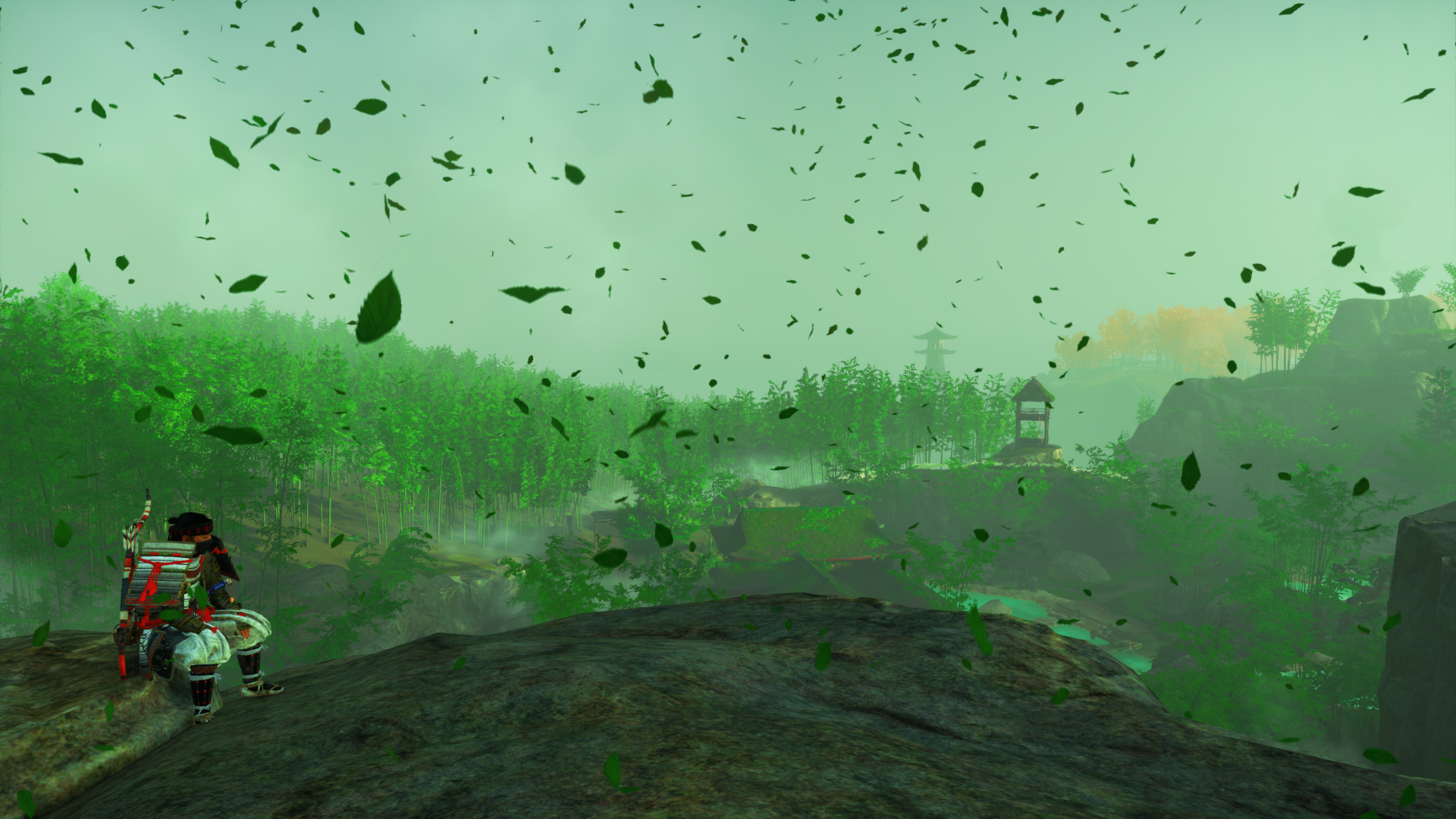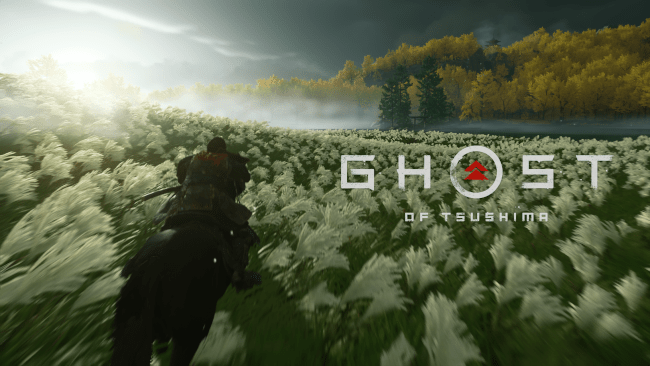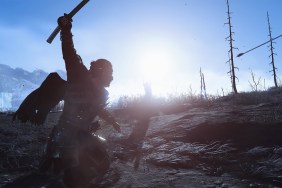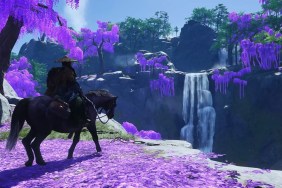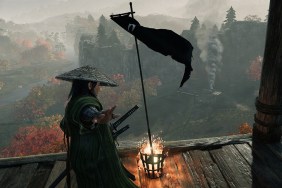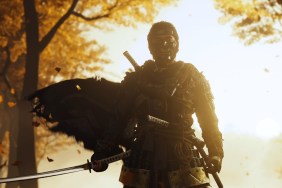Sucker Punch Productions has been hard a work for an incredible amount of time since their last full release, Infamous First Light, way back in 2014 (and even that was a smaller production overall). Ghost of Tsushima represents the studio’s fourth IP in its 23-year history, and with such a lengthy development time, represents no small amount of risk to the company. Was it all worth it? Well, we’ve spent the past few weeks exploring Tsushima island as Jin Sakai and have our Ghost of Tsushima review ready for you to slice up below.
Ghost of Tsushima Review – Beautiful World
First off, as is probably evident from the many trailers and screens that have made their way online since Ghost of Tsushima’s announcement, this is a gorgeous game. The vast majority of the island is covered in millions of blades of grass, tall and wide trees covered in countless leaves, and an occasional dirt trail trampled down over time as people have made caravan routes throughout Japan’s history. All of this foliage gently wafts about in a nearly constant island breeze, which can be used as a guiding wind to point the player to their currently-tracked objective. This is an unconventional, yet useful way to direct players, rather than just sticking a waypoint on a map and drawing an exact route showing the best paths to take.
This guidance system gives way to organically discovering points of interest during Jin’s travels. Since players will not be traversing the same beaten path between areas, on most journeys the player will stumble upon a point of interest such as a fox den, bamboo strike, haiku meditation area, enemy encampment, or dueling spot…the list of possibilities runs quite long, and because the navigation system is unobtrusive, Jin is free to chase after that fox without being nagged about going off-route.
One other thing this guiding wind system highlights is the foliage rendering tech used in Ghost of Tsushima. An early dueling mission shows off the game engine’s immense capacity for particle effects, as thousands of leaves constantly move underfoot while walking, or are simply tossed around due to the wind. They fall from trees, get swept up to highlight points of interest, and just generally enhance the game’s theme of a world in a constant state of motion. All of this occurs with a very stable frame rate, even at a high resolution. If played on a PS4 Pro, players are given the option to target frame rate, where the engine appears to try for 60 fps, or to target resolution, where the frame rate target is lowered to 30 but detail on everything is increased. HDR is also supported, and when mixed with an option for “Cinematic” shadows, causes an incredible contrast ratio to be achieved, which can make the simple act of walking from inside a house back out into the forest an illuminating experience.
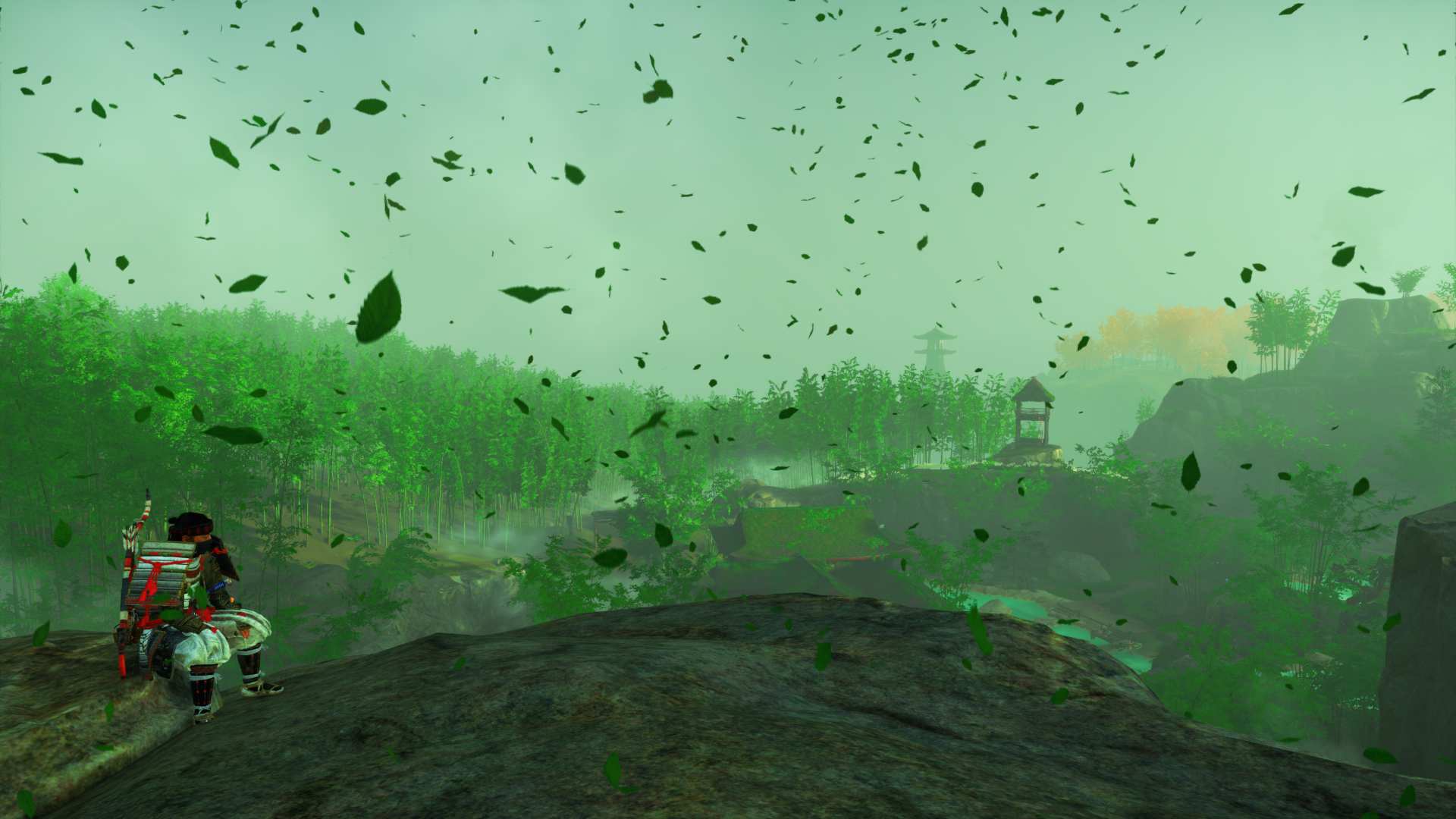
Ghost of Tsushima Review – Incredible Foliage
Sucker Punch must have done some sort of deal with an oni (demon) to get their fast travel working so quickly. Moving clear across the island takes no more than 15 seconds at most, though often this will be less than 10. This really helped with the review as I could complete the campaign with ease, but it will also help those hunting down the last few unknown locations such as fox dens at the end of the game. It’s not as though some portions of the map are sparsely populated, either, as a majority of the island is covered in lush vegetation commensurate for the time period. Whatever voodoo was used for this was worth the intense research and development that it took!
Ghost of Tsushima also features a dynamic weather system, with some of the most gorgeous sunrises and sunsets you’re likely to see in this generation of games. Being a tropical island, Tsushima also sees its fair share of storms, and a sudden thunderstorm can actually startle players with its booming thunder sound effect. Wildlife is also a common sight and sound on the island, with deer, foxes, boars, dogs, bears, birds, frogs, fireflies, dragonflies, and others to see and perhaps more importantly, hear. Certain animals can lead the player to special points of interest, with accompanying rewards to taking the time to do so. Some of these rewards are purely cosmetic in nature, such as writing a haiku to unlock a headband, but the spots upon which Jin sits to write these haiku are idyllic, so the reward is often simply the discovered location in a beautiful game.
A photo mode is easily accessible by pressing right on the d-pad, something many people will no doubt take advantage of. The photo mode has a few options for emoting Jin and changing the time of day and the weather (to get that perfect lighting), but is otherwise pretty standard stuff. With the game looking so good on its own and the ability to shift the sun in the sky, there’s not a huge need for filters, but they are there for those that want them. There are also a set of options available that keep the game in motion, allowing not just for images, but motion graphics. Gif creators like SunhiLegend are going to have a field day with the options that both freeze the world yet keep it moving all the same.
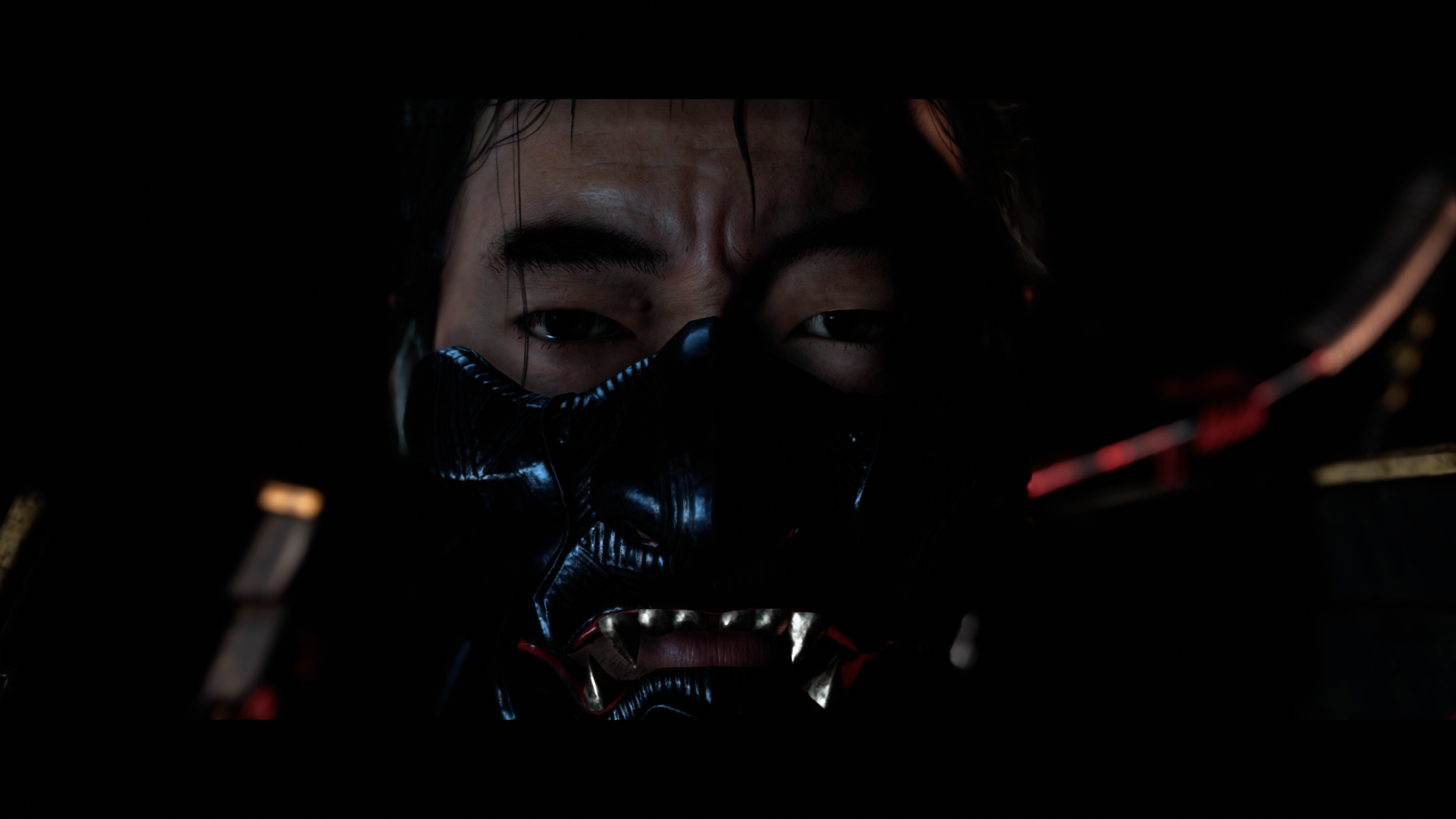
Ghost of Tsushima Review – Use Your Eyes and Ears
Ghost of Tsushima is of course fully voiced, but Sucker Punch went the extra mile when it comes to the production values of this adventure. There is an English audio track, but also a Japanese track, with the option for English subtitles. This option is the most immersive, however random banter between citizens is not translated, so those who do not understand Japanese may miss out on what the people are saying as it relates to the events of the story.
A special “Kurosawa Mode” turns the entire game into a specially tuned black-and-white, with a simulated filter that mimics the old samurai films that legendary director Akira Kurosawa was famous for. Audio is also filtered to sound like it was ripped out from an old ‘50s samurai film. This is a fun mode that has the official blessing of the Kurosawa estate, but also does a slight disservice to the wonderful colors that the game beautifully renders, as well as the excellent audio work. Certainly, its most effective use is during the game’s many duels. Players can toggle the language and Kurosawa Mode independently at any time though, so you can enjoy either, or, both, or neither throughout your journey.
Without getting into spoilers, the story of Ghost of Tsushima takes place in Feudal Japan in the year 1274. The Mongol invasion of Asia had reached Japan’s shores, and Tsushima Island was all that stood in between the Mongols and the mainland. The player takes on the role of Jin Sakai, a classically trained samurai warrior fighting alongside his uncle as the Japanese and Mongolians clash. As the story progresses, it becomes clear to Jin that the old ways of the samurai will not be enough to defeat this new threat, as he takes up the identity of the Ghost in stark contrast to his honorable upbringing and his uncle’s beliefs.
This is a much more grounded story than anything Sucker Punch has done before. There is a bit of mysticism sprinkled in, but generally things are rooted in and inspired by the ancient history of Japan. It’s also effortlessly entertaining, with moments of intense suffering, loss, redemption, reflection, perseverance, and even a bit of humor from time to time, spread across both the main campaign and staggering amount of side content for players to discover.
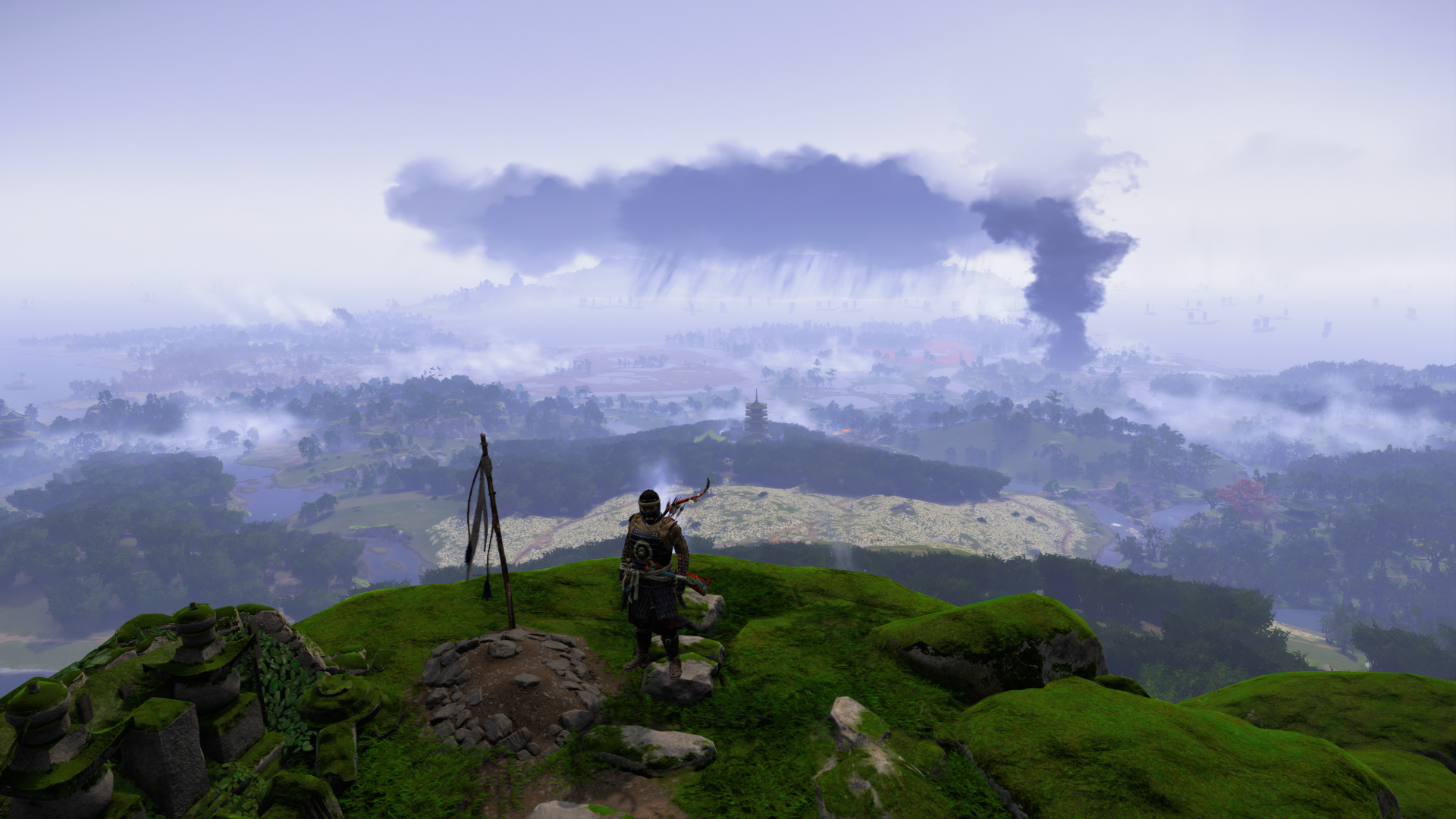
Ghost of Tsushima Review – A Lengthy Story
The main campaign will take most players 20-30 hours, though this time frame is reliant on doing mostly main missions. As previously mentioned, fast travel is stupendously quick in Ghost of Tsushima, so for those who can’t be bothered by side missions, they generally will not bother you. Beyond the main campaign and story Jin Sakai, there are three supporting characters who have their own sub-campaigns that Jin will take part in. Each of these have multiple chapters spanning Tsushima Island, and have exposition and plot twists easily as good as Jin’s own story.
Optional though they may be, most players would be remiss to skip over these missions. To complete all of the tales in Ghost of Tsushima might take 50 hours for an average playthrough. Except for the very last main mission, there are no branching storylines and no “Karma” system to balance (despite the constant back and forth between the honrable tactics of the samurai and dishonorable methods of the Ghost). It’s simply the story of Jin Sakai’s rise as the Ghost. Branching dialog changes some conversations between Jin and others, but that’s about it as far as player influence on the story goes. The ending does set things up for a sequel, however loosely, but also wraps most things up with a succinct ending chapter.
A heavy focus has been placed on combat in Ghost of Tsushima, and there is a lot to consider when taking on groups of enemies. There are four stances to utilize, each of which are strong against specific enemies. Changing stances is quick and done by holding R2 and pressing a face button. Helpfully, the game slows down for a few seconds while holding R2, and symbols offer reminders at which stance is good for which enemy type. A fifth Ghost stance can also be used once unlocked, and only after killing enough enemies in a row without taking damage, but it is a viscerally electrifying stance to use, making the player feel powerful like nothing else in the game. Unlocking this stance is about equivalent to unlocking the Blades of Chaos in 2018’s epic God of War, the reasons behind which are best left for the player to tease out in order to understand.
Ghost of Tsushima Review – Always a Few Swings From Death
Selecting easy, normal, or hard difficulty can be done at any time during gameplay, as there are no trophies given for completing the game on a particular level. This mostly seems to decrease the amount of time given to the player in order to successfully react to an incoming attack, and how quickly the player is discovered by the enemy. No matter the difficulty level, enemies and Jin can both be killed in just a few hits. The majority of the difficulty in Ghost of Tsushima comes in timing; learning to slow down and wait for a chance to attack. In the early hours of the game, even wildlife such as roaming dogs can take out a careless or unprepared player.
Enemies can and will attack from all angles, and it behooves the player to learn to master the parry if they don’t want to frantically dodge out of the way. Parrying rewards the patient player with an opening for landing an attack. Those who hate waiting can also combine Ghost weapons such as kunai (throwing knives), black smoke bombs, sticky bombs, and bow and arrows in order to stagger opponents before going in for the kill. When approaching any group of enemies, before combat begins an option to engage them in a “standoff” is given, which draws nearby enemies to surround Jin. At this point, the player must hold the Triangle button, releasing only when their opponent attacks. Releasing too early or too late will usually result in nearly fatal damage being received, in addition to having to take on more enemies than may have been encountered in one go had stealth been used.
Stealth is indeed always an option for the Ghost. Pampas grass flourishes on Tsushima Island, which provides perfect cover for Jin to plan his attack. This actually turns out to be a weak point in the otherwise stellar experience of Ghost of Tsushima. Enemies lose track of Jin a little too easily, even in the middle of combat. Hard mode does not seem to affect their ability to track the player in the grass, either. This is good news if a retreat is needed, but kind of breaks the immersion.
Furthermore, enemy AI when on patrol is lackluster. Enemies will alert others if they discover a dead body, but heightened patrol routes only last a minute or so before things go back to normal. Combined with their lackluster tracking abilities, out-of-combat enemies pose little threat. Enemies are also strictly territorial – they will retreat to their patrol route if they reach the edge of their territory, even if engaged in combat with Jin. This behavior was also seen in another open-world game, Horizon Zero Dawn, so perhaps it is a symptom of designing open-world games: how long do you program enemies to pursue the player when the map is so massive? This is a question that has no easy answer, but to have the enemies run back inside their designated zone when in the middle of combat is a bit jarring.
Ghost of Tsushima Review – What a Way to End
There are boss fights in Ghost of Tsushima which take the form of duels. These are classic, one-versus-one standoffs, each of which opens with a cinematic of the combatants readying their weapons, with the world around them seemingly coming to a standstill as each person contemplates what they plan to do. It hearkens back to old samurai films of the Kurosawa era. While these fights are fun, there isn’t a ton of variety in them. Once the player figures out which moves to block and which to dodge, the duels become a simple game of timing. At least the locations and stories leading up to each duel are interesting, though, and they are a nice change of pace from the usual massive battles against Mongol forces.
Ghost of Tsushima ends the current generation of consoles on a high note. A fantastically gorgeous world sets the stage for high-stakes close quarters combat, with multiple enthralling stories told over many chapters that keep the player moving across the island. Core combat is rewarding, and while enemy AI is disappointing outside of combat, all other aspects of Ghost of Tsushima have been lovingly crafted, and will be thoroughly enjoyed by players of all types. It’s not Sekiro or Dark Souls/Bloodborne difficult, but challenge can be found for those who seek it. Ultimately, Ghost of Tsushima allows you to pick up a sword and become one badass samurai, and have fun while avenging your fallen brethren.
Ghost of Tsushima review code provided by publisher. Version 1.03 reviewed on a PlayStation 4 Pro. For more information on scoring please see our Review Policy.
-
A wonderfully-crafted world
-
Entertaining stories
-
Strategic combat
-
Enemy AI strictly scripted
-
Boss duels are repetitive
Ghost of Tsushima Review
-
Ghost of Tsushima Review #1

-
Ghost of Tsushima Review #2
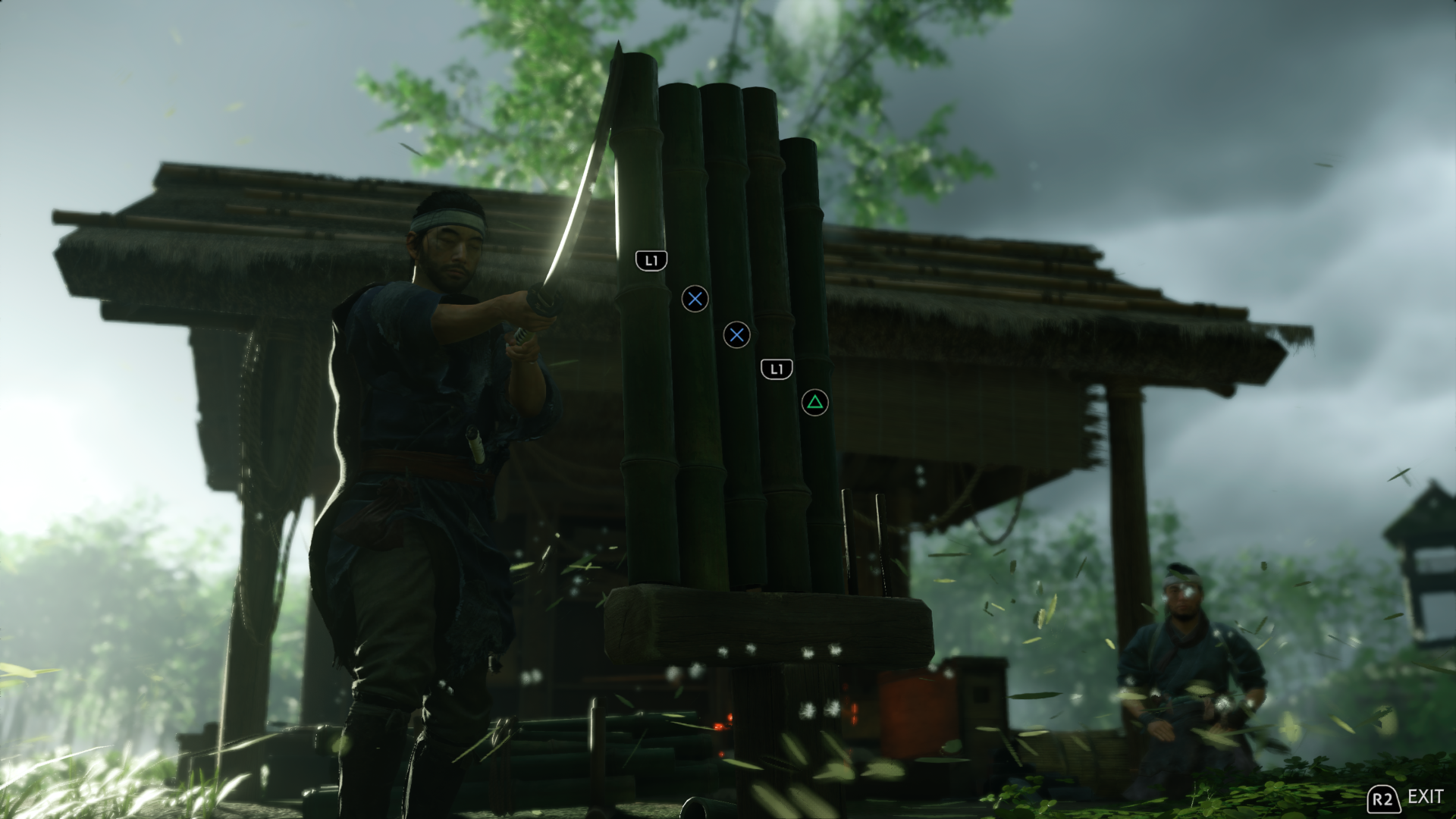
-
Ghost of Tsushima Review #3
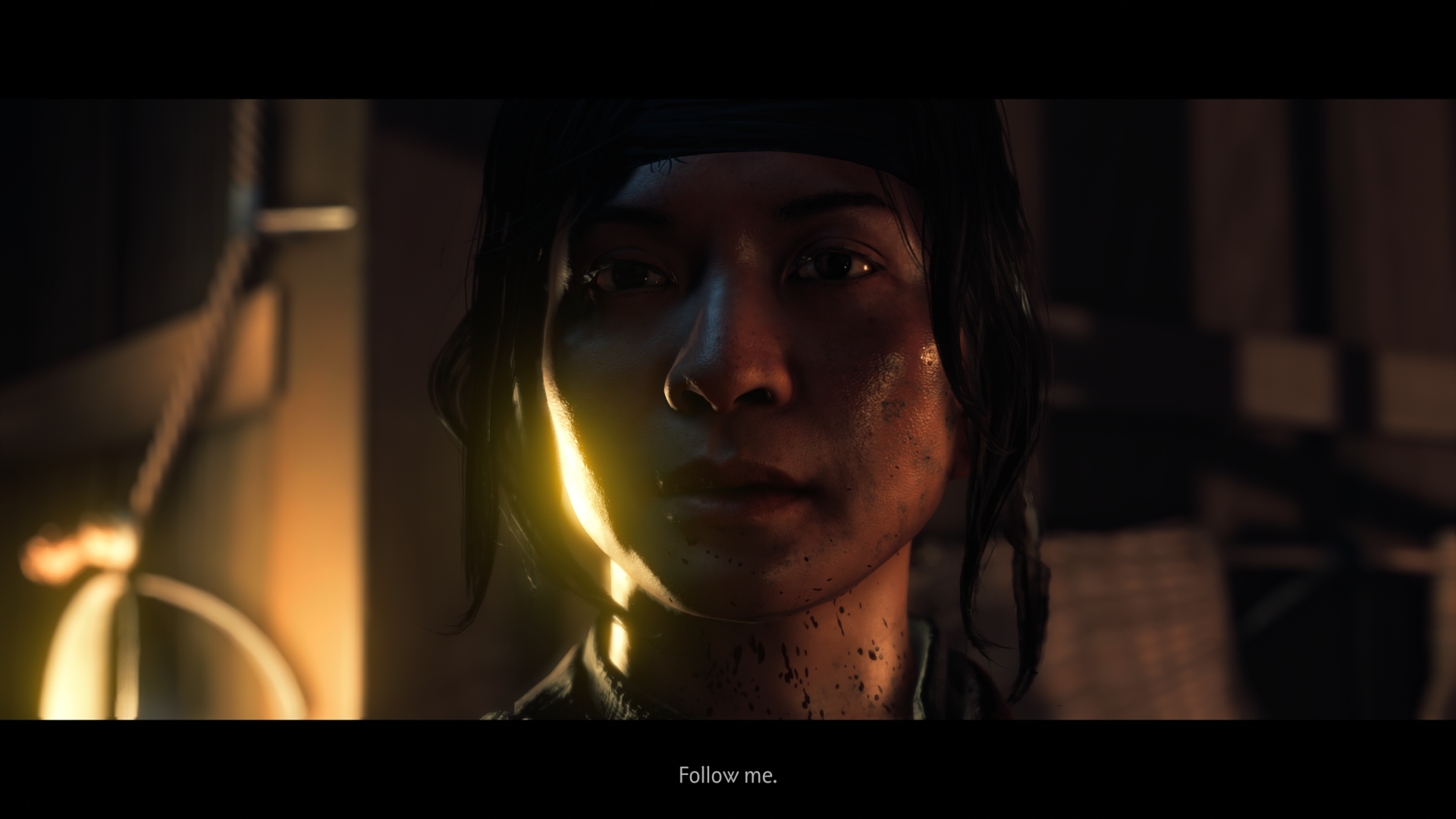
-
Ghost of Tsushima Review #4
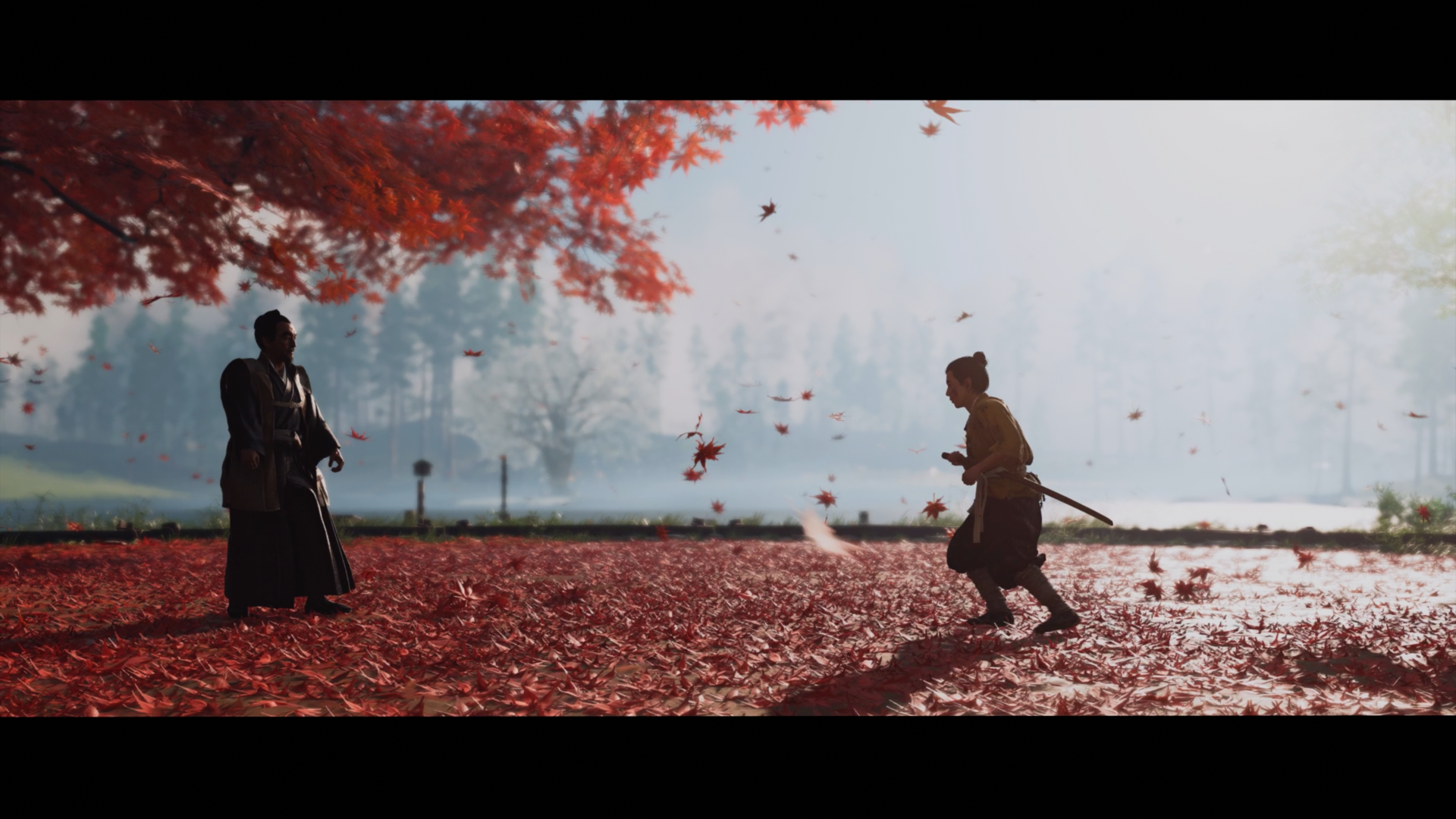
-
Ghost of Tsushima Review #5
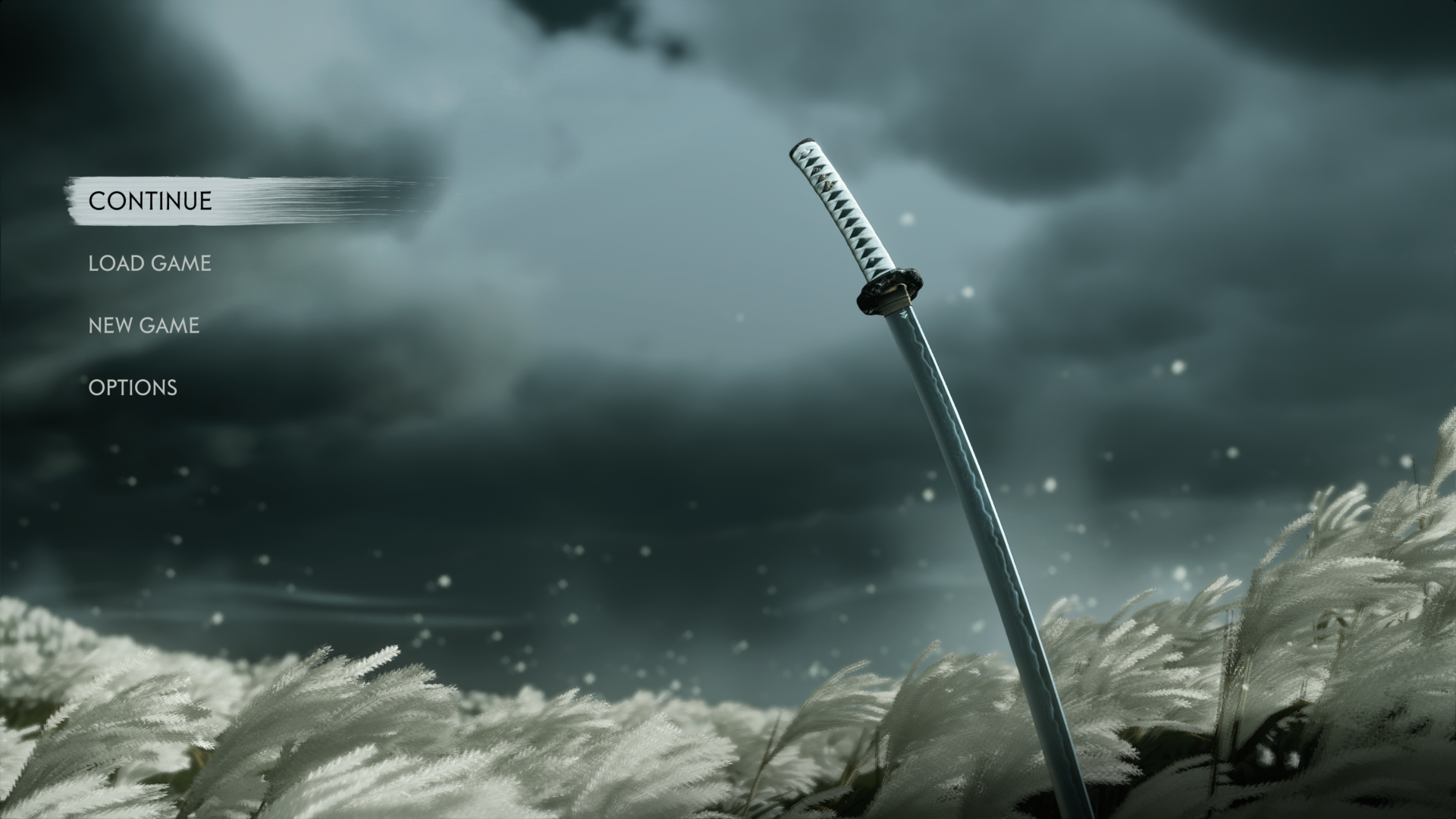
-
Ghost of Tsushima Review #6
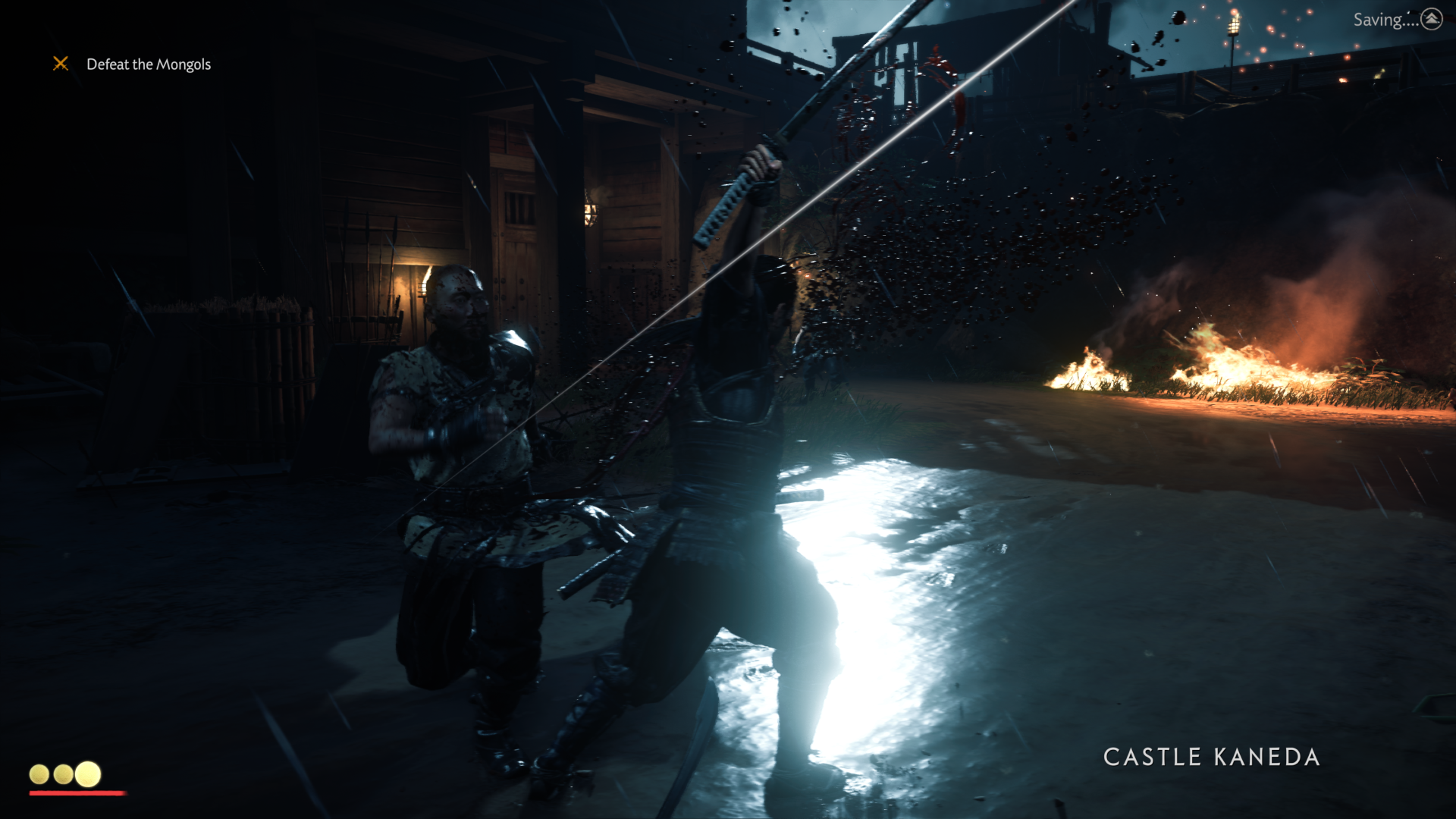
-
Ghost of Tsushima Review #7
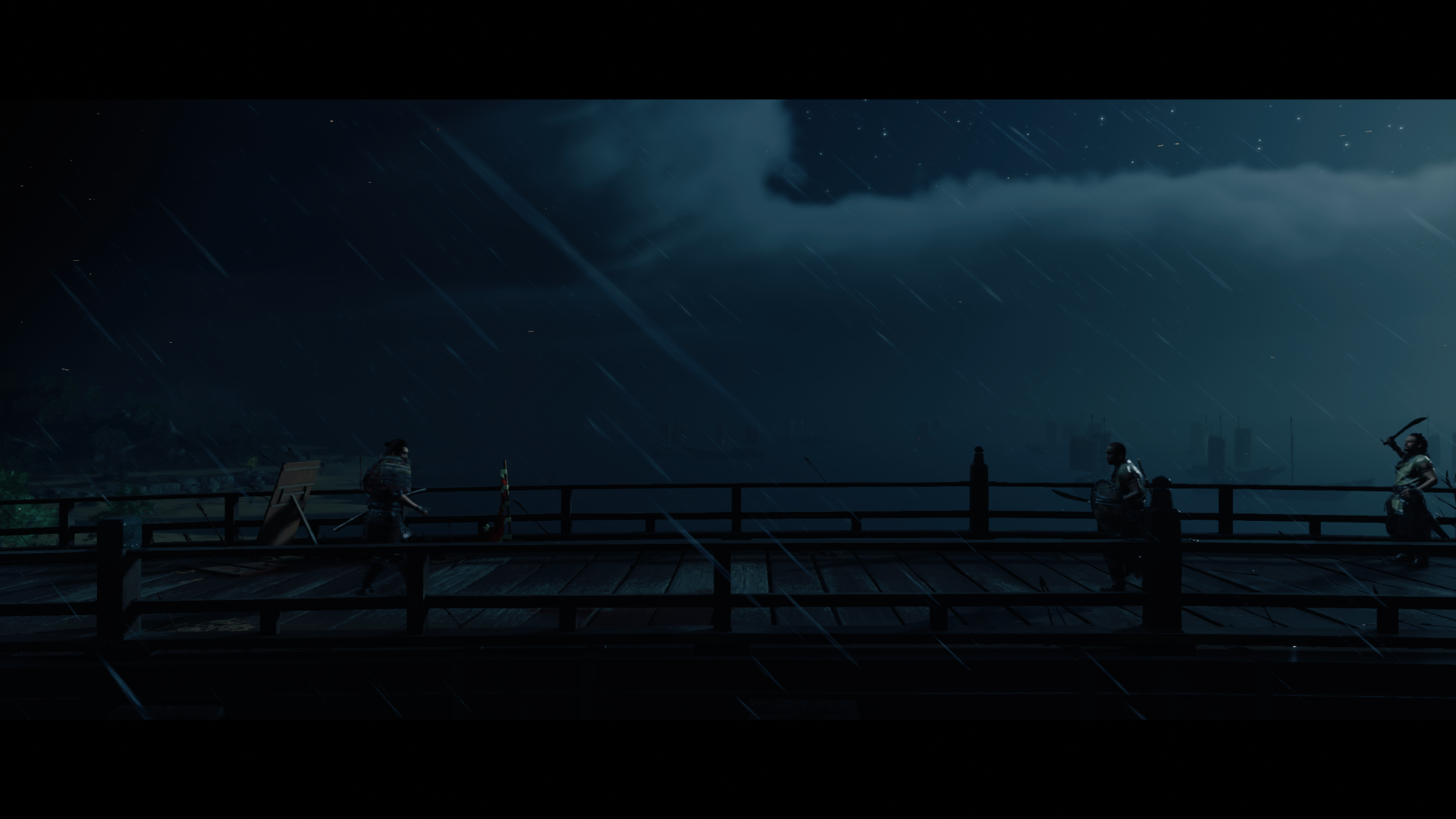
-
Ghost of Tsushima Review #8
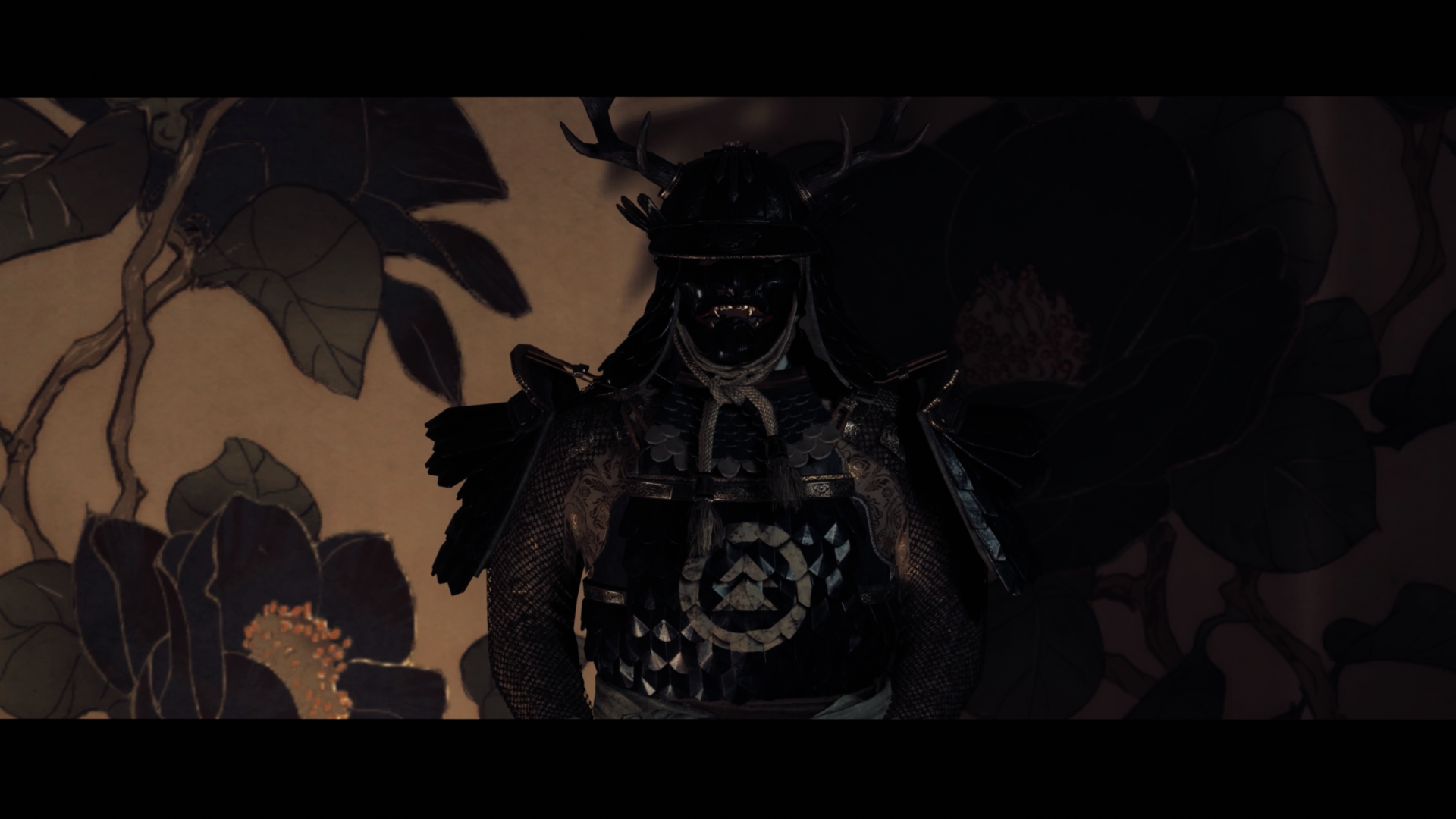
-
Ghost of Tsushima Review #9
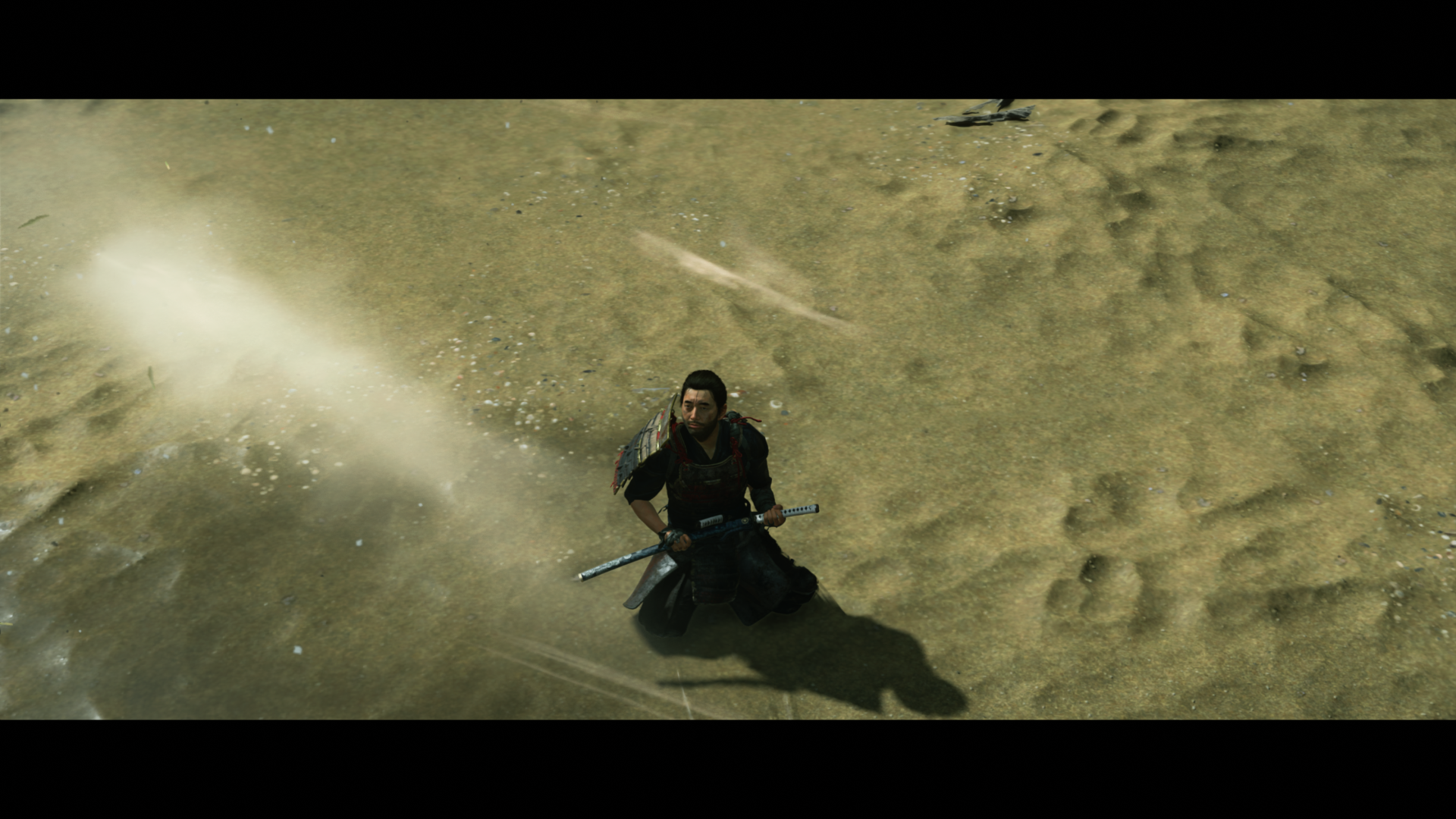
-
Ghost of Tsushima Review #10
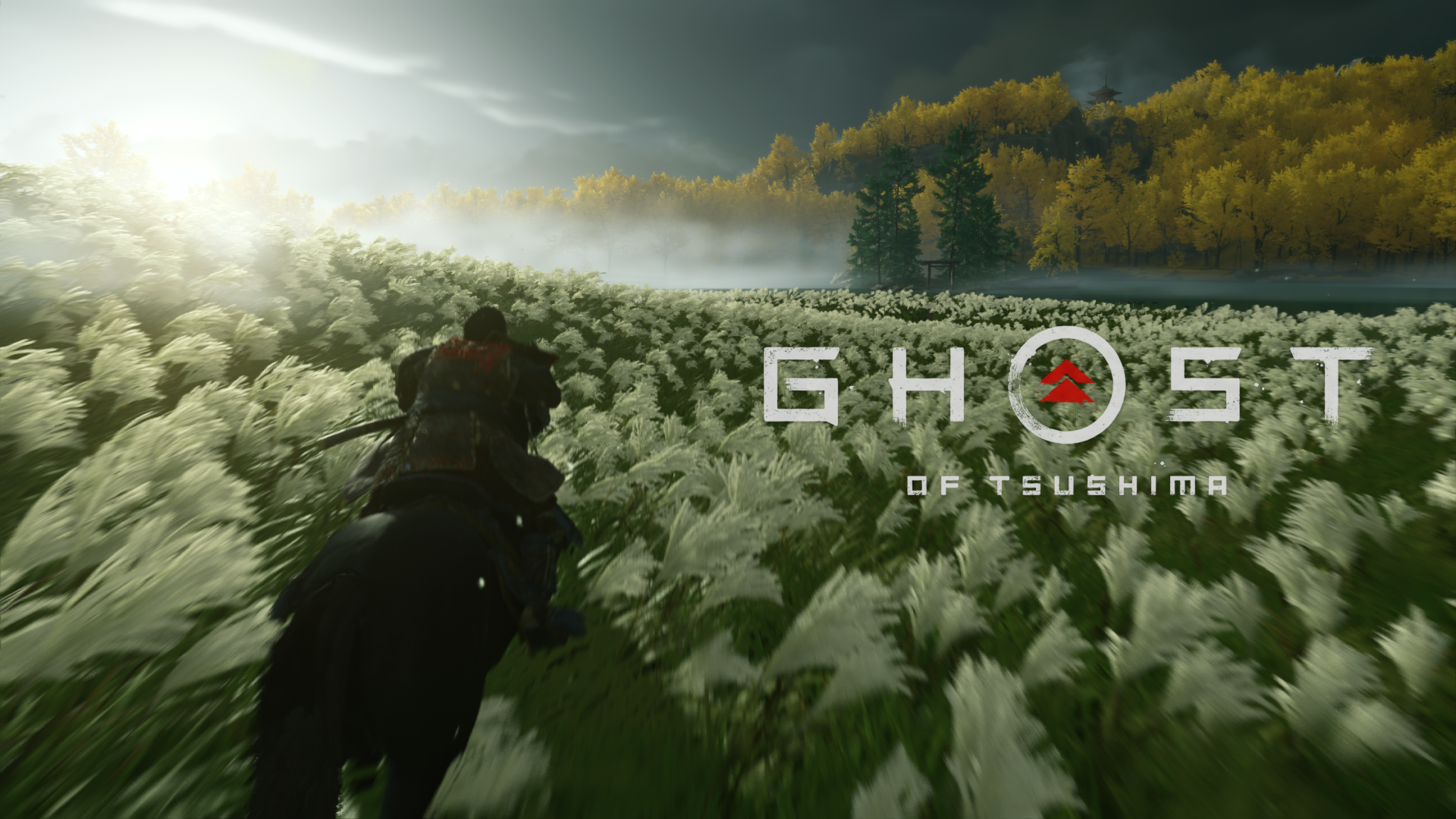
-
Ghost of Tsushima Review #11

-
Ghost of Tsushima Review #12
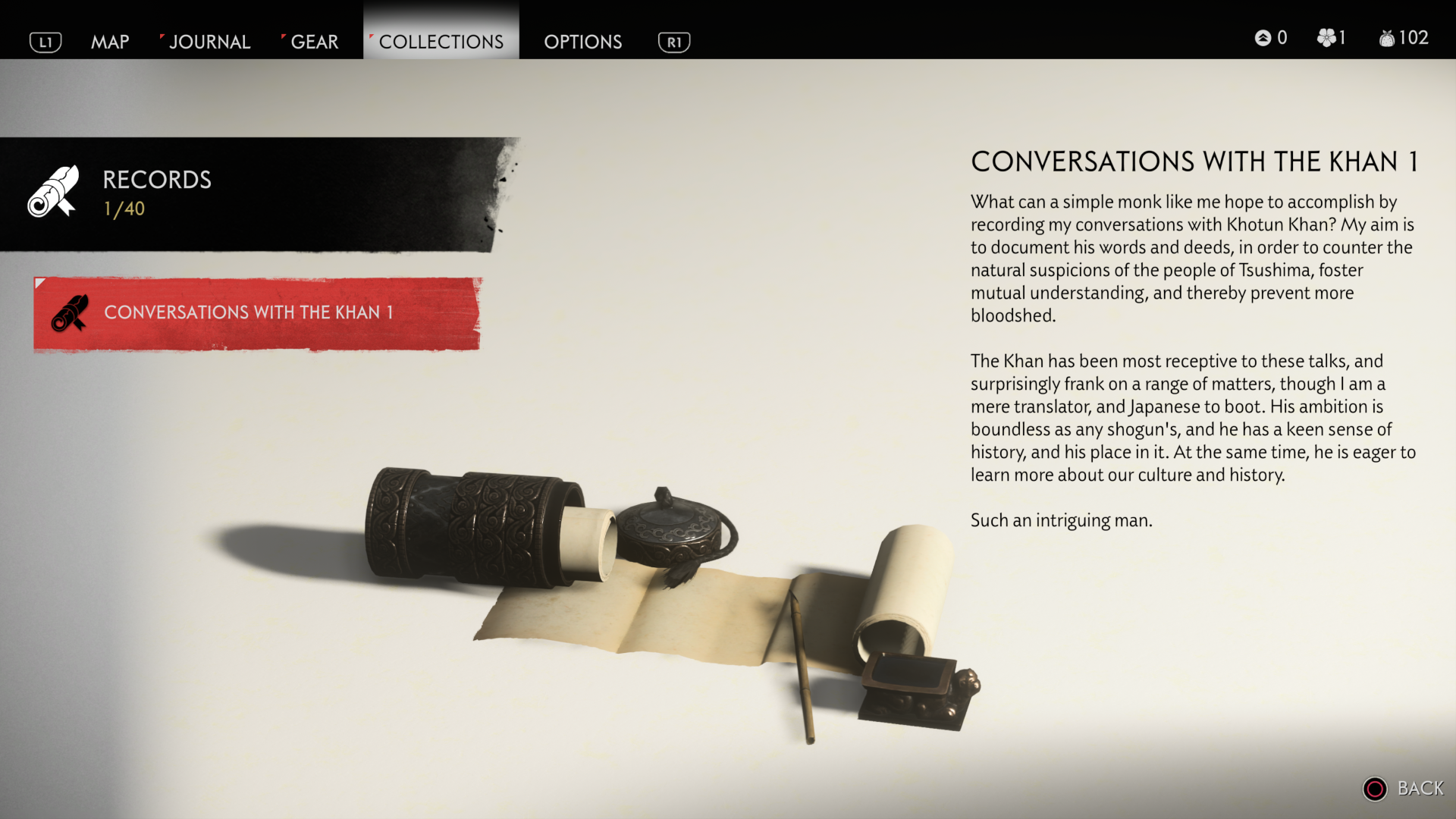
-
Ghost of Tsushima Review #13
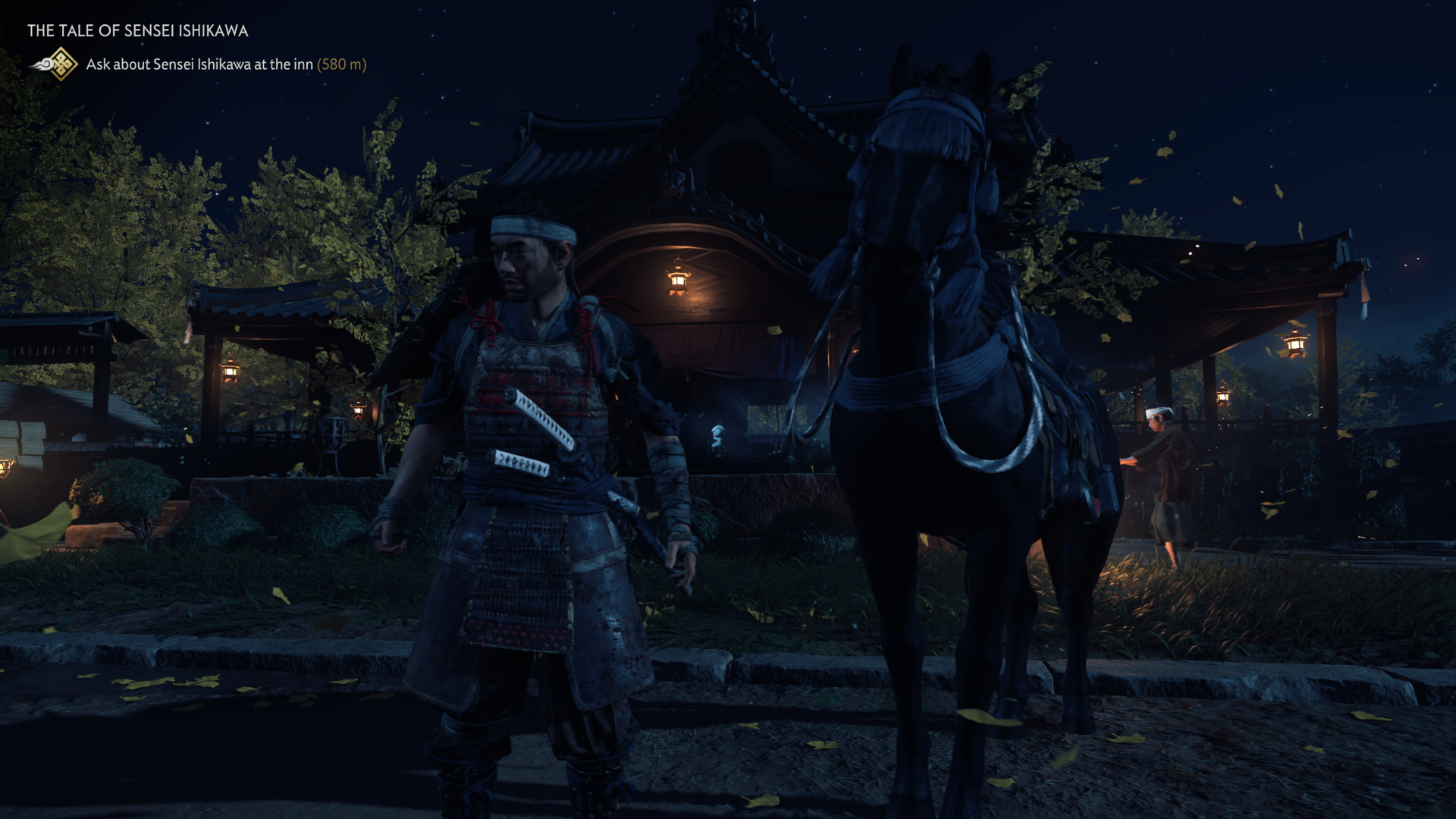
-
Ghost of Tsushima Review #14
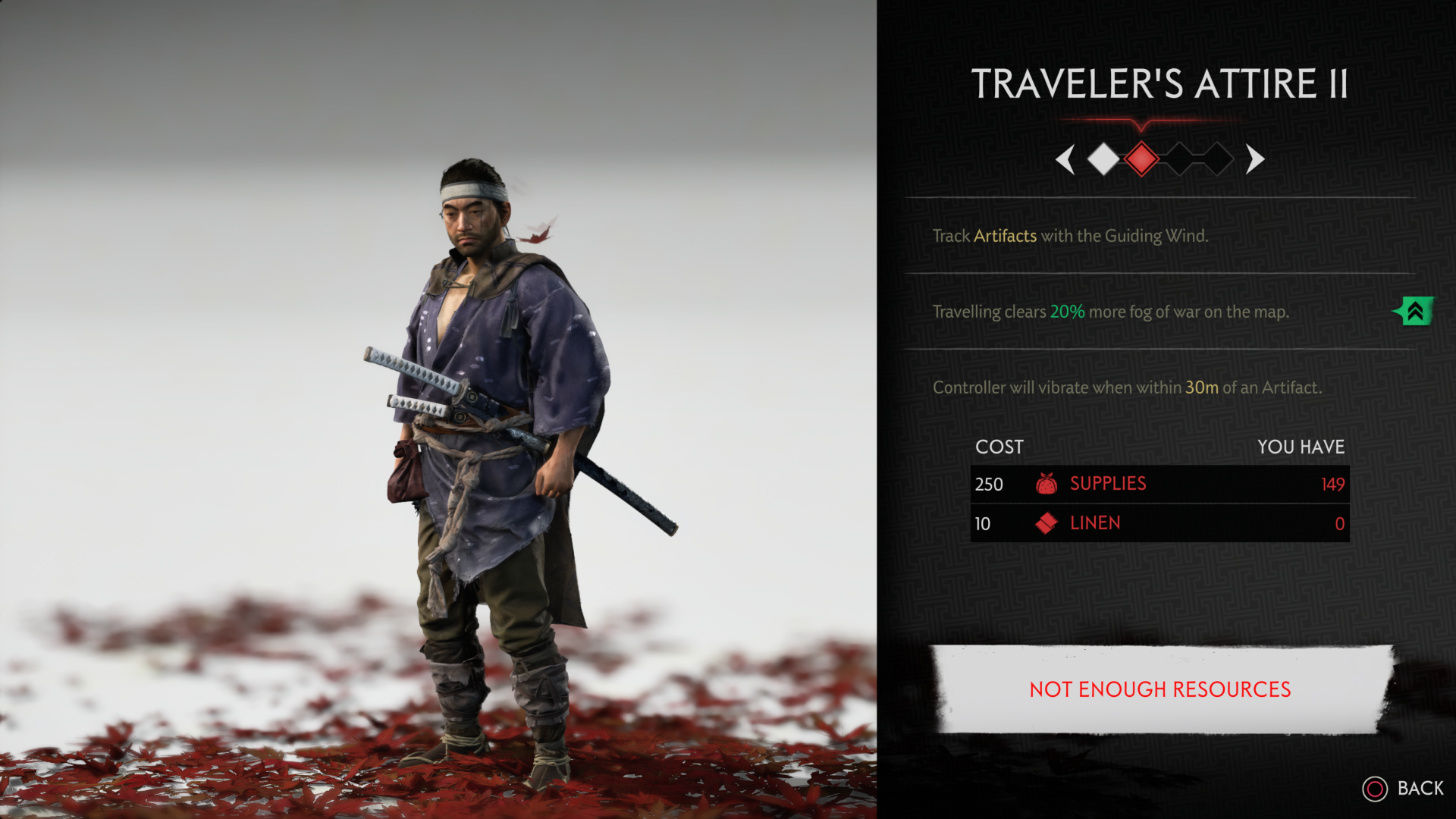
-
Ghost of Tsushima Review #15
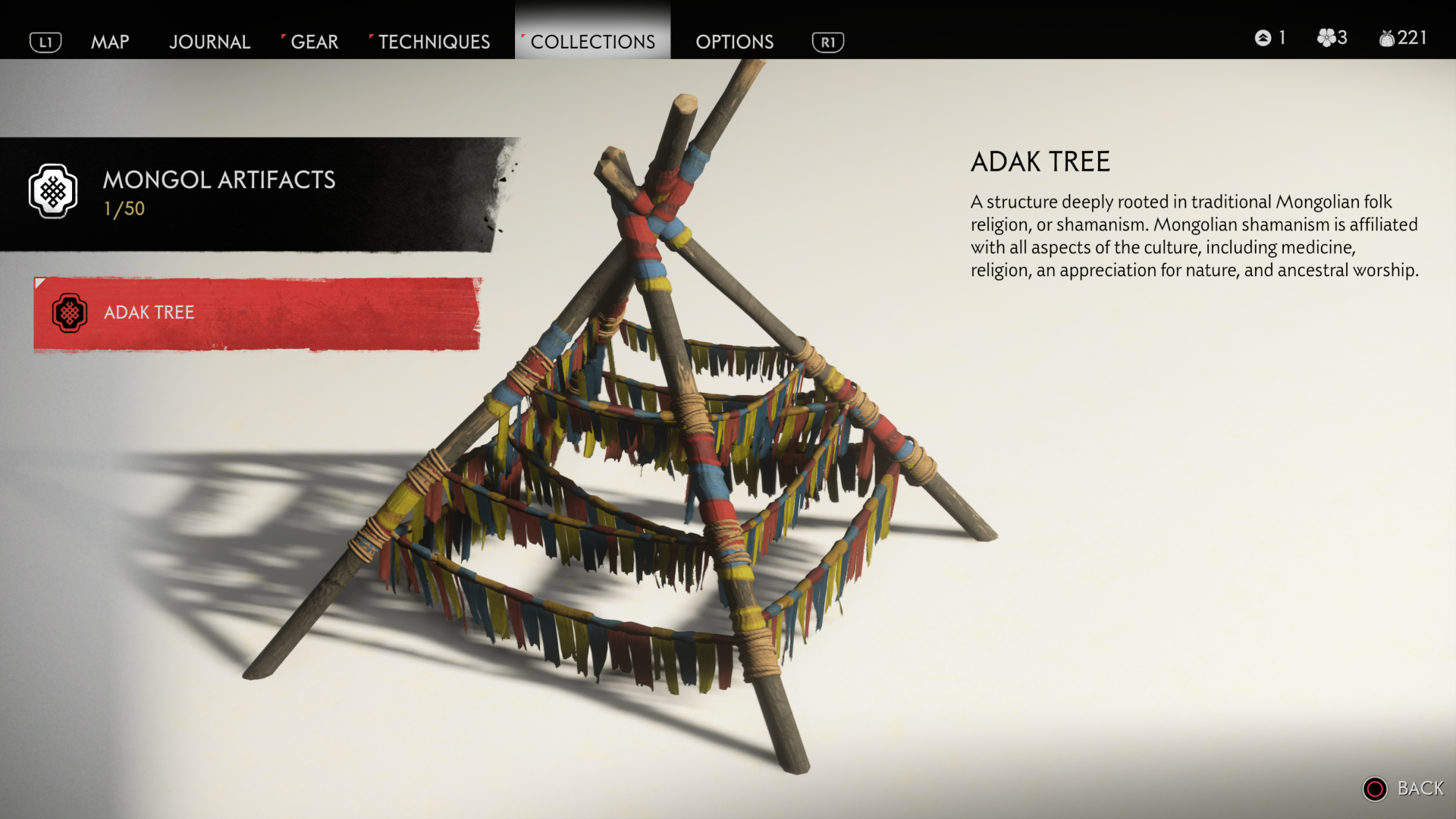
-
Ghost of Tsushima Review #16
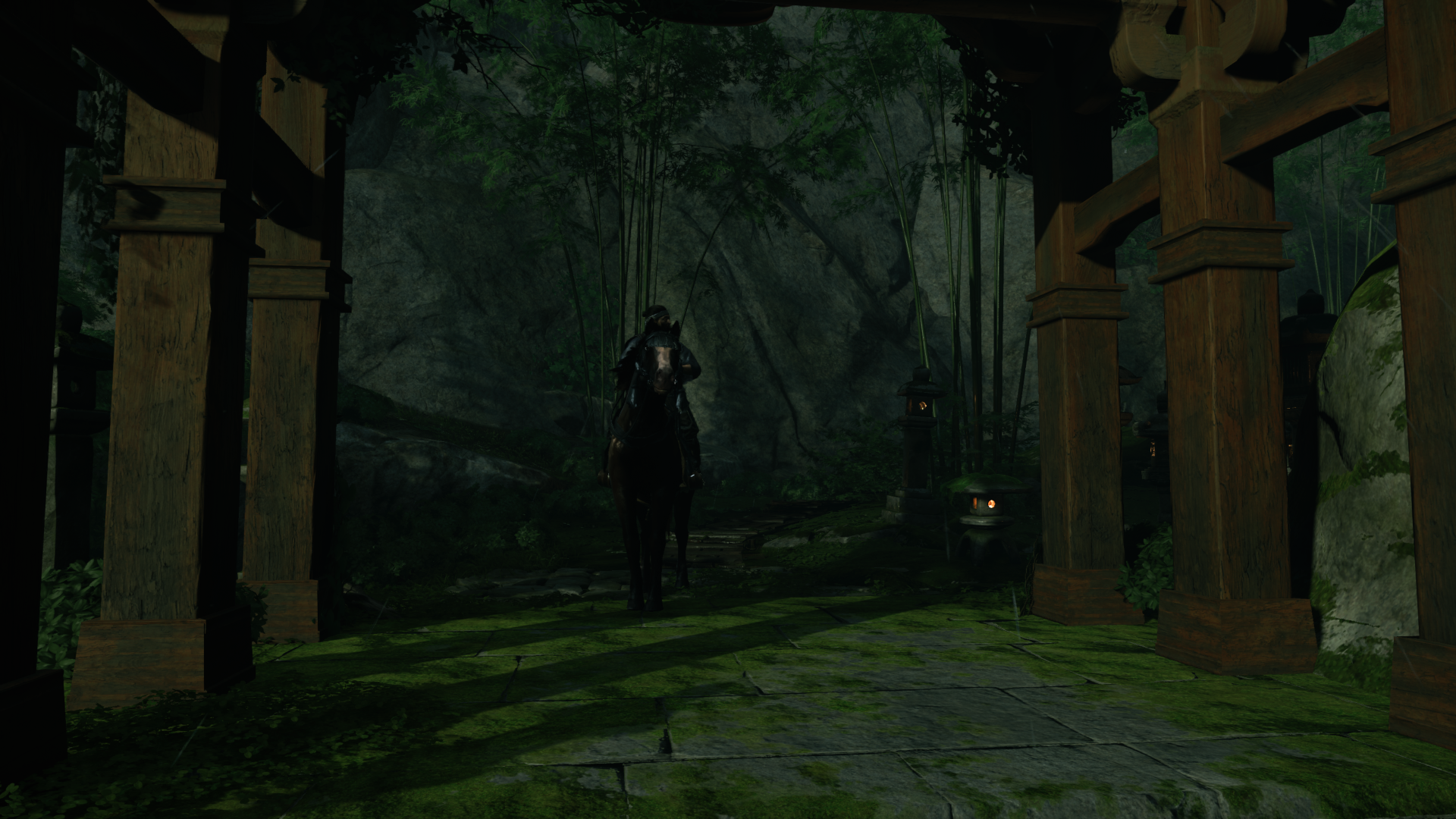
-
Ghost of Tsushima Review #17
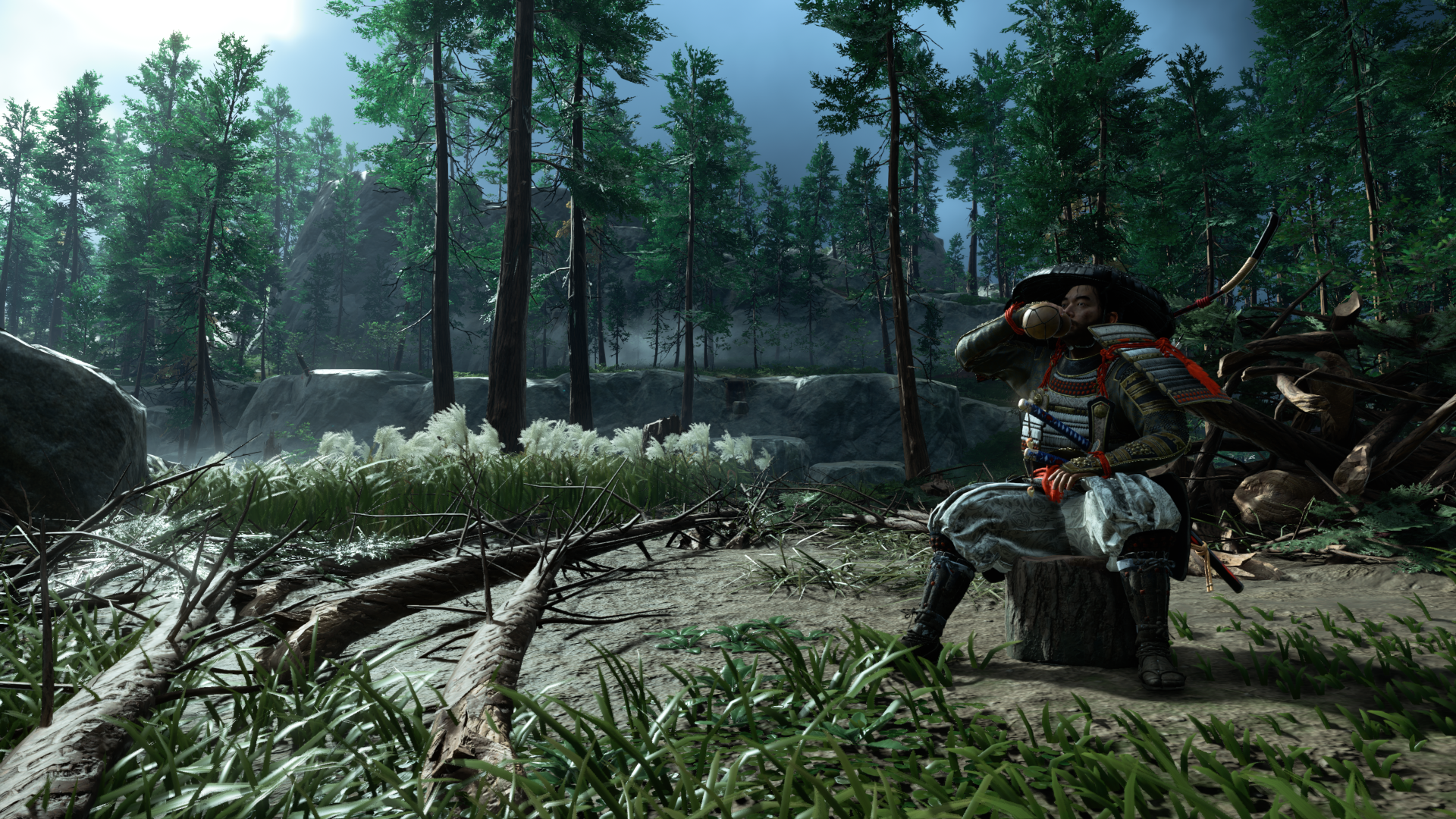
-
Ghost of Tsushima Review #18

-
Ghost of Tsushima Review #19

-
Ghost of Tsushima Review #20
